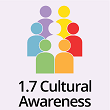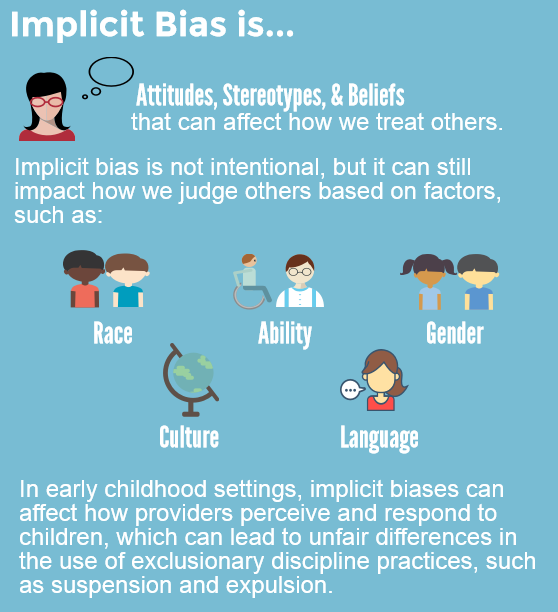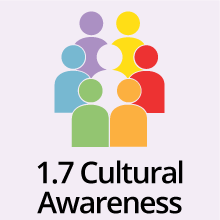
– How do I do this?
– What Barriers Might I Run Into and What Are Solutions?
– Where do I go for more resources?
– References
Disproportionality exists in early childhood suspensions and expulsions by age, gender, race, and ability. Studies have found that providers/teachers are more likely to suspend or expel children who are Black, boys, and older (e.g., 4-year-olds). Studies of school-age children have also found that schools are more likely to suspend or expel lower income children and children with a disability. fact, children of color, boys, and children with disabilities are likely to be more harshly disciplined than other children for the same behaviors. They are also more likely to be disciplined for behaviors that are not well defined, such as “having a bad attitude.”
Implicit bias contributes to the discipline gap, especially for Black boys. If teachers expect bad behavior, they watch children more closely and punish them more often. 
Everyone has some implicit biases; it is part of being human. Our implicit biases often come out when we must make quick decisions under stress, and we may end up relying on unconscious stereotypes. Implicit biases become harmful when they affect decisions made about how children are treated at school, which in turn affects their chances at succeeding in school and later in life. By working to consciously and intentionally recognize and overcome our biases, we can stop them from having a negative effect on the way we interact with children and families. This will help all children succeed and help reduce suspensions and expulsions, especially for boys, children of color, and children with disabilities.
“At the end of the day, the question is not whether or not we have bias. The question is how we can address it.” – Linda K. Smith, Deputy Assistant Secretary for Childhood Development, Administration for Children and Families
Although implicit biases are difficult to recognize and overcome, studies show that discussion of and self-reflection on biases, cultural awareness training, and using resources such as Culturally Responsive Teaching can help overcome biases. Cultural awareness is important because people from different cultures may behave differently in the same situation or might perceive the same behavior in different ways. Cultural awareness, especially about behavior, can help teachers understand their children and their motivations and change the way they use discipline. However, implicit biases are not addressed by only understanding other cultures. Adult self-awareness is critical. Adults must also engage in self-reflection and work to understand what they bring to the table in their perceptions and experiences. By working to understand themselves and their students, providers can help shrink the discipline gap and promote equity and justice for young children throughout their lives.
“We have to be courageous enough to have conversations that make us uncomfortable.” – Lisa Williams
For more information, watch this TED talk by Rosemarie Allen:
How do I do this?
Step 1. Discuss and reflect.
- Have conversations with your staff. Conversations about bias should be approached sensitively and carefully. Start by talking about how bias is normal, the important thing is how we think about our biases and how they affect our behavior. Noticing differences between people is natural and normal. It is very possible to learn not to judge people based on those differences.
- Work with your staff to set norms for your discussion. These might include the following:
- Create formal (but safe and supportive) ways for staff to discuss and reflect on such issues as:
- You don’t have to make a plan for having a conversation about equity by yourself!
- Stress the negative effects of disproportionality on education and social outcomes, particularly for Black children and children with disabilities.Emphasize that the goal is to create a positive school climate where all children can thrive.
- Set a clear purpose and goals in all discussions. This may include a guide or checklist of topics to talk about and data that show what disproportionality looks like (see Recommendation 1.1). You and your staff can watch this video of Rosemarie Allen talking about how important it is for educators to reflect and understand themselves if we want to reduce the effects of implicit bias and stop suspensions and expulsions.
- Here are a few more helpful resources to promote discussion and reflection:
Step 2. Identify training needs. Use professional development to make sure that discussion and reflection effects improvements in practice.
- Teaching Tolerance has a free professional development webinar series about reducing prejudice, improving relationships between different groups, and promoting equity.
- Talk to your staff and try to answer these questions about the kind of professional development you need:
- Where does training need to be targeted?
- Do staff have any requests or skills they want to build? Use this outline of the skills early childhood workers should have to guide your professional development needs. It includes skills for inclusiveness of all cultures, languages, needs, and abilities.
Step 3. Create formal policies and procedures to reduce discipline disproportionality.
- Many programs do not have formal policies for managing discipline. Having formal policies can help reduce implicit bias in discipline by making discipline less subjective. You don’t have to create these policies alone, you can adapt them from policies and guidelines that already exist.
- The Arkansas Division of Child Care and Early Childhood Education created expulsion guidelines, an expulsion checklist, and other resources to help end suspensions and expulsions in childcare.
- Here is an example template exclusionary discipline guidance policy document that you can adapt for your program.
- This resource on designing policies and procedures for reducing discipline disproportionality can also be helpful.
- Define challenging behaviors (no matter how small) and appropriate responses in clear, measurable terms (see Recommendation 3.1 about how to support staff to understand the function of behavior and 3.2 for how to support staff to develop behavior support plans to address challenging behaviors). Take vague language, such as “bad attitude,” “difficult,” and “disruptive” out of behavior reports and conversations.
- Identify a “diversity point person” among staff who wants to improve program and school policy and practice and can bring attention to the challenges that children of color and children with disabilities face in school. Read this to learn more about what a diversity point person does and why it is important.
- Work to create a positive school climate by reflecting equity and diversity in your books! Check out this list of children’s books on bias, diversity, and justice.
Step 4. Express gratitude and acknowledge progress. After training and developing or revising policies, reflect again with staff on current strengths and needs, and plan a course of action. Recognize staff who have worked hard and made progress using new practices. Encourage teachers to acknowledge one another, as well. This creates a culture of support and recognition.
- In regular staff emails or newsletters, add a “shout out” section where administrators and other staff can submit a brief comment about a colleague’s hard work (e.g., “Thanks Ms. Johnson for reflecting and talking honestly and encouraging others during professional development. Your time and dedication to this process are greatly appreciated!”).
- Administrators can personally call or send handwritten notes to thank teachers who are working hard to put training into practice and reflect on their teaching practices. Let your staff know that you see their hard work!
What Barriers Might I Run Into and What Are Solutions?
Potential Barrier: My staff and/or I am uncomfortable talking about race, gender, ability, and our own biases and the way they affect discipline and our interactions with children.
Solution: That is OK! Many people feel uncomfortable talking about implicit bias and inequity. Everyone has implicit biases, and being willing to have a conversation is an important step to meeting the needs of all children. Before starting a conversation about implicit bias, inequity, and discipline, create a safe and welcoming space for staff to have an honest conversation. Work as a group to create ground rules for how everyone will contribute. Check out this blog post that walks you through steps for leading a conversation on equity and this resource for educators leading dialogue and reflection about diversity and equity. It includes steps to help you prepare, suggestions for ground rules, icebreakers, ways to reflect, and group activities.
Potential Barrier: I don’t have access to professional development resources to train my staff in cultural awareness or to help us talk about our implicit biases.
Solution: There are many wonderful, free resources online for educators working to reduce implicit bias and promote equity in their schools. Many of them are listed throughout this guide. For example, check out the Anti-Defamation League’s page specifically created for early childhood providers interested in anti-bias education.
Where do I go for more resources?
- Check out Teaching Tolerance (SPLC) to learn more about why we need equity in schools and how to build a positive school climate and find lots of great resources for yourself, your staff, and your children.
- For more information on positive school climates, check out the School Climate page from the National Center on Supportive Learning Environments.
- For more information on anti-bias education, check out this toolkit from the NAEYC.
- Edutopia has many resources to help learn about Culturally Responsive Teaching.
- Looking for even more free resources to help carry out some of these steps in your school or program? Inclusive Schools Network provides tools, tips, and strategies to help you make a difference in your school and community.
- The book Difficult Conversations: How to Discuss What Matters Most is a useful tool for any person or group who is learning how to talk about tough topics productively.
References
Adamu, M., & Hogan, L. (2015). Point of entry: The preschool-to-prison pipeline. Retrieved from https://cdn.americanprogress.org/wp-content/uploads/2015/10/08000111/PointOfEntry-reportUPDATE.pdf
Capatosto, K. (2015). Implicit bias strategies. Kirwan Institute. Retrieved from https://pdfs.semanticscholar.org/3d03/9ac57b1cd4a5b15e19be747d8d85ba1355f7.pdf
Devine, P. G., Forscher, P. S., Austin, A. J., & Cox, W. T. (2012). Long-term reduction in implicit race bias: A prejudice habit-breaking intervention. Journal of Experimental Social Psychology, 48(6), 1267-1278.
Great Schools Partnership (2016). Disproportionality. The glossary of education reform. Retrieved from http://www.emstac.org/registered/topics/disproportionality/faqs.htm
Great Schools Partnership (2016). Equity. The glossary of education reform. Retrieved from http://edglossary.org/equity/
Elementary & Middle Schools Technical Assistance Center. (n.d.). Disproportionality: The disproportionate representation of racial and ethnic minorities in special education: Frequently asked questions. EMSTAC.
Gillam, W. (2005). Pre-kindergarteners Left Behind: Expulsion Rates in State Prekindergarten Programs. FCD Policy Brief Series, 3, 1-8. Retrieved from http://challengingbehavior.fmhi.usf.edu/explore/policy_docs/prek_expulsion.pdf
Gilliam, W. S., Maupin, A. N., Reyes, C. R., Accavitti, M., & Shic, F. (2016). Do Early Educators’ Implicit Biases Regarding Sex and Race Relate to Behavior Expectations and Recommendations of Preschool Expulsions and Suspensions? Yale Child Study Center. New Haven, CT.
Losen, D. (2011). Discipline policies, successful schools, and racial justice. National Education Policy Center. Retrieved from http://escholarship.org/uc/item/4q41361g
Maupin, A. N., Reyes, C. R., Accavitti, M., & Shic, F. (2016). Do Early Educators’ Implicit Biases Regarding Sex and Race Relate to Behavior Expectations and Recommendations of Preschool Expulsions and Suspensions? Yale Child Study Center. New Haven, CT.
National Center on Safe Supportive Learning Environments. (2016). School Climate. American Institutes for Research: National Center on Safe Supportive Learning Environments. Retrieved from https://safesupportivelearning.ed.gov/school-climate
National Education Association (2008). Promoting Educators’ Cultural Competence to better serve culturally diverse students. An NEA Policy Brief. NEA Human and Civil Rights Department. Washington DC. Retrieved online from: http://www.nea.org/assets/docs/PB13_CulturalCompetence08.pdf
Pearson, A. R., Dovidio, J. F. and Gaertner, S.L. (2009). The nature of contemporary prejudice: Insights from aversive racism. Social and Personality Psychology Compass, 3, 314-388. Journal compilation. Blackwell Publishing Ltd.
Russ, E. (2014). Zero tolerance, zero benefits: the discipline gap in American public k-12 education. New voices in public policy. George Mason University School of Public Policy. Retrieved from journals.gmu.edu/newvoices/article/download/485/389
Skiba, R. J., Poloni-Staudinger, L., Simmons, A. B., Feggins-Azziz, L. R., & Choong-Geun, C. (2005). Unproven Links: Can Poverty Explain Ethnic Disproportionality in Special Education? Journal of Special Education, 39(3), 130–144.
Smolkowski, K., Girvan, E. J., McIntosh, K., Nese, R. N., & Horner, R. (2016). Vulnerable Decision Points for Disproportionate Office Discipline Referrals: Comparisons of Discipline for African American and White Elementary School Students.
Sullivan, A. L., Klingbeil, D. A., & Norman, E. R. Van. (2013). Beyond behavior: Multilevel analysis of the influence of sociodemographics and school characteristics on students’ risk of suspension. School Psychology Review, 42(1), 99–114.
